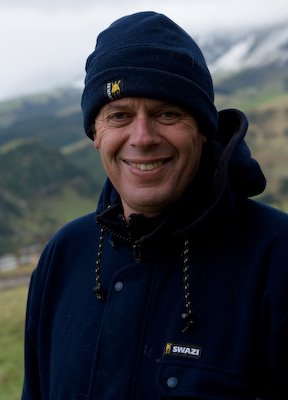Do you prefer Manual or Auto, Sir?

Kia ora tatou:
Those of us old-timers who grew up on film will remember the small trailer-load of filters we use to carry round, especially when we were trying to balance the light or the colour of the light or worse still, work with mixed lighting sources. 80A, 85B, fluoros of different sorts, we used them all. Some of us even carried colour temperature meters so we could get things accurate. I used to look at the video dudes and their ability to do white balance and sigh…if only…
Now that digital is here, most of those are obsolete. After all, we have built-in white balance in our digital cameras. Who needs to even think about it? Just put the camera on AWB (Auto White Balance), and leave the camera to sort it out. It will do a fantastic job. Who wants to drive a manual, when an auto is easier?
I do, frankly.
There are a number of issues at stake here, a number of picture-making concepts to be worked through. Let me explain. But before I start, for those of you who don’t really understand White Balance or colour temperature, here is a good tutorial.
One of the joys of driving a manual car is that the driver has complete control of when gear changes occur. He controls the process of locomotion. Granted the auto gearbox may provide smoother changes, but it works according to the algorithms programmed in at the factory. In other words, it knows best. Or thinks it does.
With AWB, it is the same. The camera reads the temperature of the light and adjusts the colours of the image according to what has been programmed into it. Think about your exposure meter. It is programmed to average the light to a mean middle gray value.This means that it will get most things right most of the time, but not always. AWB is the same. It looks to give you an average reading of the colour temperatures in your scene. Thus it will take the blue out of a shot done in the bush by lowering the temperature. But what if you want to keep the cold blue-green of the forest (which , to my eye is what it is really like)? Then you need to take control, to pick your own gear?
And if you shoot jpegs, you had better have an unwavering faith in your camera (manufacturer) or be able to be happy with whatever you get. Because it is not easy to sort it out afterwards. OK, OK, shooting RAW is a Get-Out-of Jail card. And I shoot RAW 90% of the time.
But there are reasons I do not use AWB and times when I do.
The latter first.
When I am faced with a mixed lighting situation, where there may be tungsten, fluorescent and daylight in the shot, I will use AWB, or perform a Custom White Balance using a calibrated grey card, and fine-tune later in my RAW converter. My Canons to a great job of that as a rule.
For my personal work I set my camera to the daylight setting and pretty much leave it there. Here is why.
I grew up on film. I shot daylight film, balanced for 5500K. So I learned how an image would look when shot in the trees (excessive green), late in the day (low temperature-<4000k)>9000K, giving blue casts). Over time I became able to predict what the film would do, and how to adjust its response to the colour of the light reaching it. In other words, I could choose to the vocabulary I need to make the statement I wanted. I also liked film because it reproduced what was there in colour and temperature terms, not what my mind thought it saw. Over time I came to enjoy learning to see again. Colour slide film (manufacturer’s inbuilt bias aside) gave me a vision of the world rather more realistic than my learned awareness. Just to reiterate: your brain tells the eye what to see, not the other way around.
There is another reason I like using this setting. My aim is to photograph what is in my mind’s eye, rather than accurately duplicating what is in front of me. If I want to do that I will go and study the science of photography or join the Air Force, where they teach those things brilliantly. Thus if the dawn I watched had (to me) a particularly roseate glow, I want to bring that out in my image. If the trees or bushes I photographed by the Maungapohue Natural Bridge had a curiously cold green quality, I want that to show in my images.
Now I use a digital camera I can do that. Chimping (reviewing an image on the camera LCD) is a necessary part of my workflow. By leaving the WB setting on Daylight setting, I can see immediately what if any colour balance issues I may have, and note it for future adjustment when I am processing. It enhances my previsualisation of the final image, and gives me a vital tool for realising my vision.
There is a lot to be said for manual gearboxes.
Ka kite ano


1 Comments:
Nice photo!
Cheers, Rebecca
Post a Comment
<< Home